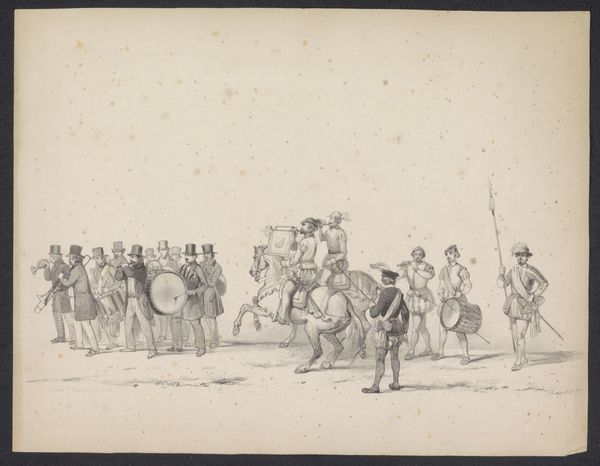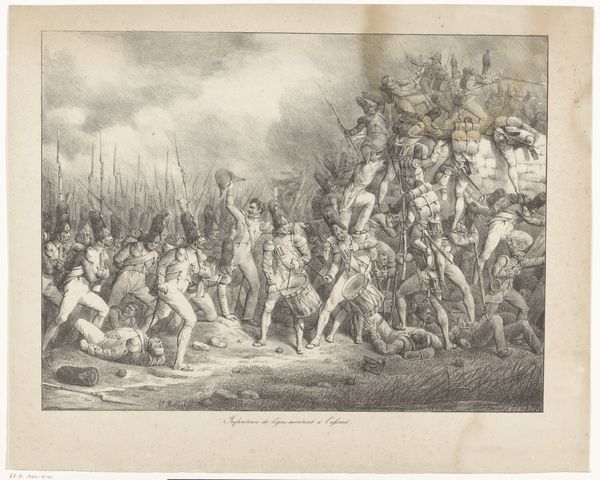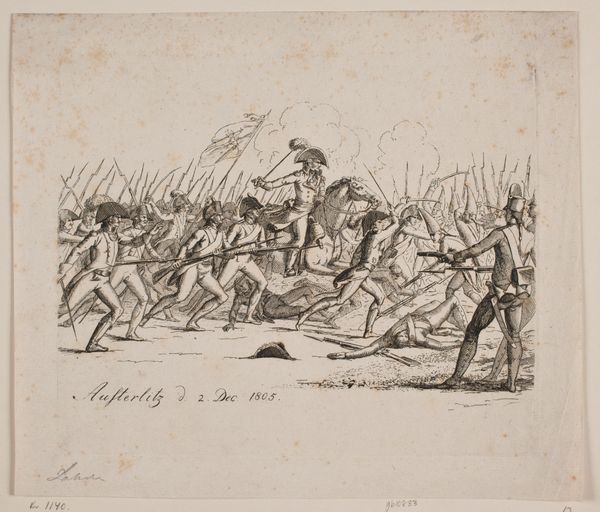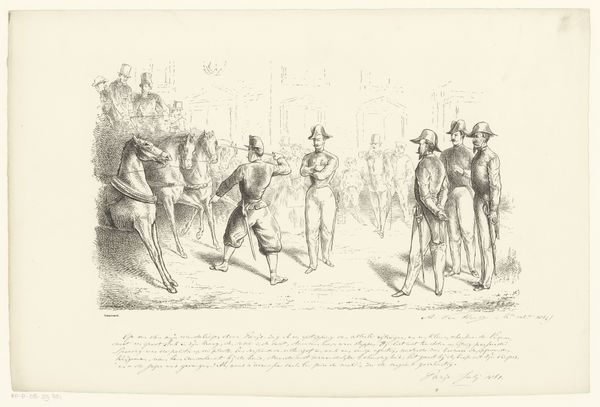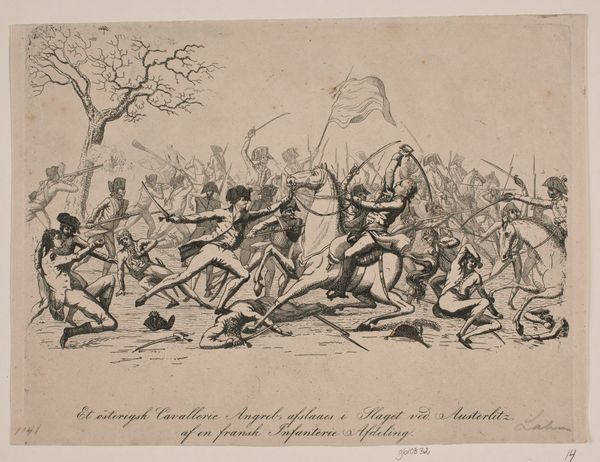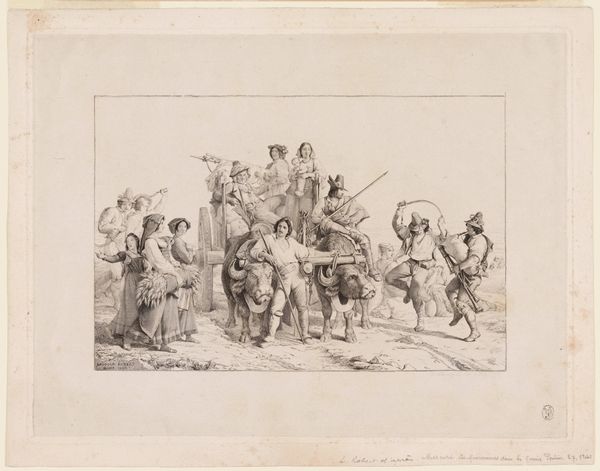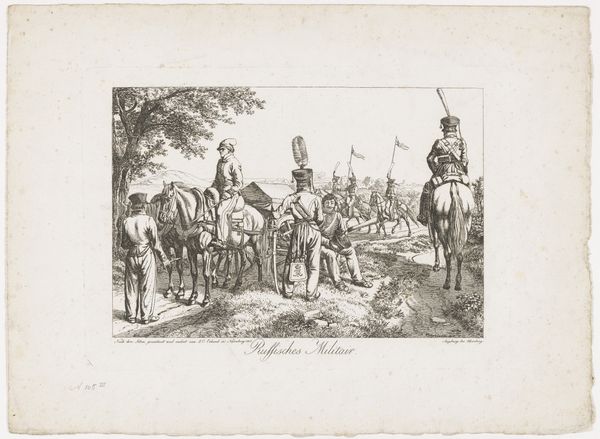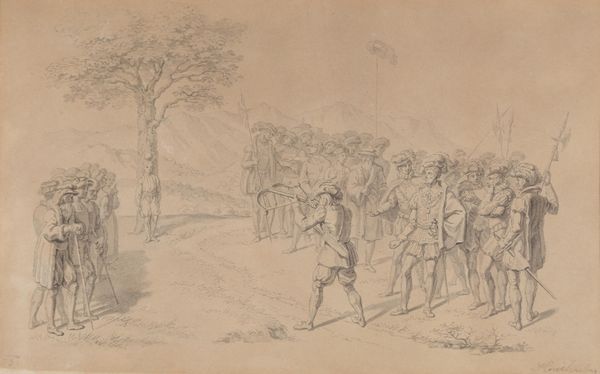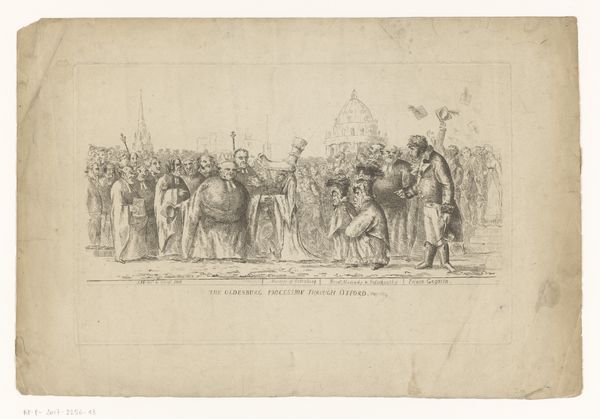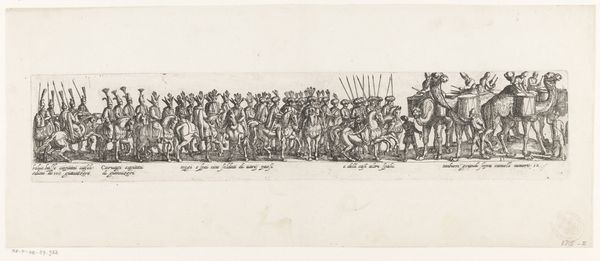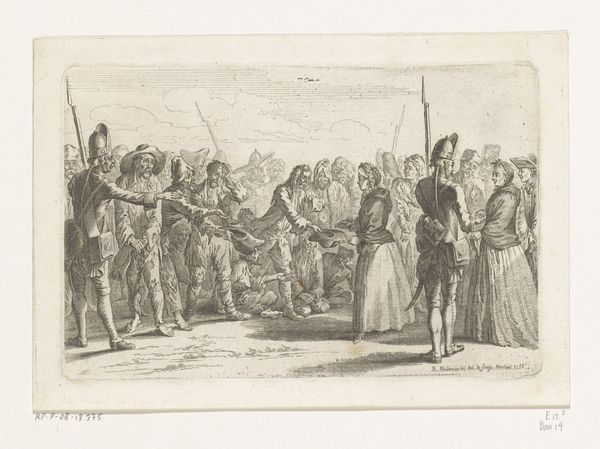
Dimensions: 165 mm (height) x 220 mm (width) (plademaal)
Curator: Welcome. Here we see "l'Entrevue des deux Empereurs," an engraving completed in 1805 by Gerhard Ludvig Lahde. Note how Lahde utilizes the precision of line to capture this pivotal moment. What is your immediate impression of the work? Editor: It feels undeniably charged with tension. The composition, split between the central figures and their flanking entourages, speaks of a fragile accord built on a field of power. It begs the question of how and why. Curator: Precisely. The controlled hatching technique creates form and depth, directing the eye towards the two emperors at the center. The contrasting textures – the smoothness of their coats against the ruggedness of the landscape – invites scrutiny of each figure's presence. Editor: And consider the date, 1805. Napoleon’s ambition was reshaping Europe, and alliances were tenuous things, built upon pragmatism rather than genuine camaraderie. Lahde encapsulates that precarious balance. This isn't simply a meeting, it's a performance of power. Who benefits and how is written into every line. Curator: I see your point about the performance. One might suggest that the subtle differences in their postures reflect their contrasting styles of leadership. Alexander I appears to offer a slightly more open hand. What does this subtle gesture say to us? Editor: Exactly! It suggests diplomacy, perhaps a forced graciousness toward Napoleon’s undeniable strength, visualized in the comparatively bolder lines and stance. We cannot divorce this encounter from its impact upon colonized lands and those living in poverty at the time. These types of arrangements consolidated elite power and continued a legacy of inequity for marginalized peoples around the globe. Curator: This adds another layer, then, highlighting not only personal dynamics but the broader impact of their actions. I think it is vital we continue to discuss artwork from this era through the many points of view the world now has. Editor: Agreed. By critically engaging with Lahde’s engraving, we unlock these potent questions of influence, intention, and consequence across time. Curator: A nuanced examination of form, informed by sociopolitical awareness—an enriching way to consider works such as this one.
Comments
No comments
Be the first to comment and join the conversation on the ultimate creative platform.
